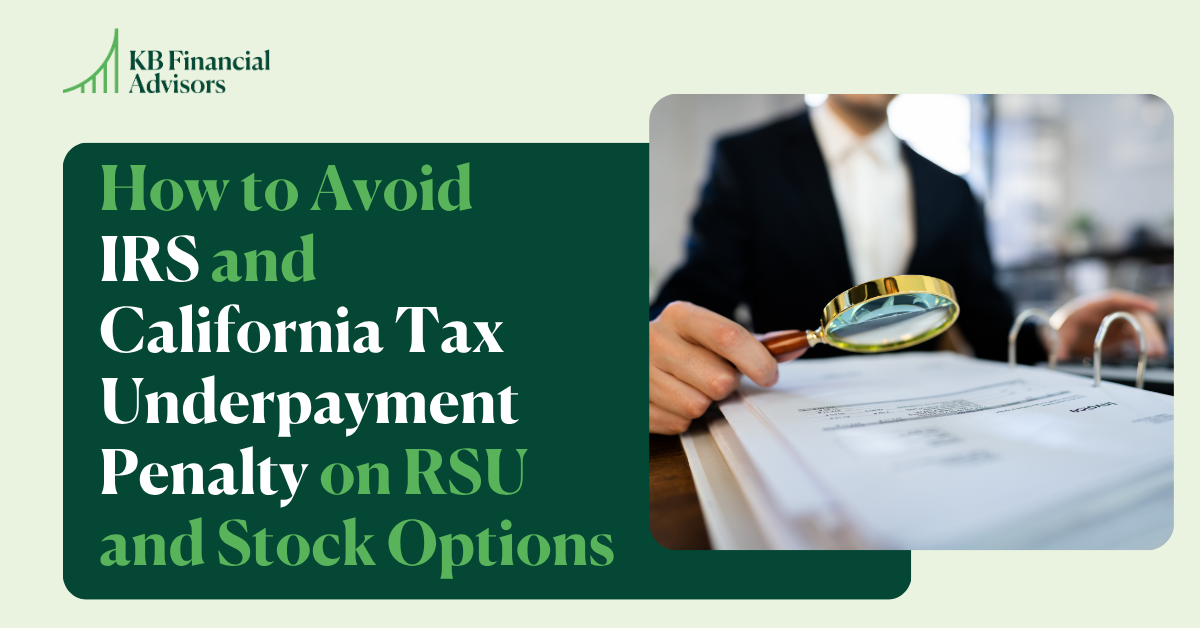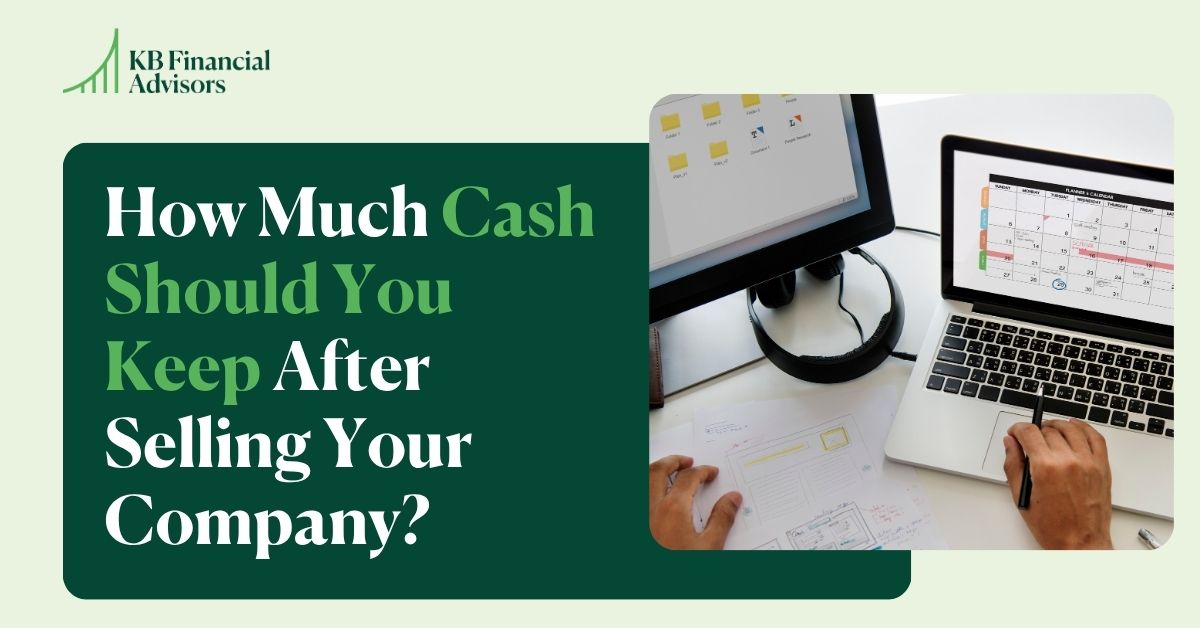Contrary to your standard worker, tech employees have several different types of income. (Well, maybe not SO MANY, but there are more than a few… which is significantly more than most people who just have to count their paychecks.) Especially after an IPO.
And that’s great, because it means you’ve got more than one way to expand your wealth.
But it also comes with the responsibility of knowing, understanding, and paying the taxes that apply to each one. And they’re all treated differently. Some of these types of income will have withholdings taken out automatically (like your salary, bonuses, commission checks, RSUs, etc.), and others don’t (shares, capital gains income, etc.).
What’s tricky is that even income WITH withholding might not have enough taken out to fully cover your tax bill, and you’re responsible for making up the difference.
If you don’t pay the difference before you file, you’ll face an underpayment penalty, which is no fun (and expensive.)
In this article, we’ll walk you through how to avoid IRS and California underpayment penalties, plus the key payment deadlines to keep in mind.
How to Avoid IRS and California Tax Underpayment Penalty, Step One: Get Your Financial Paperwork Organized
It sounds basic and boring, but the two major keys to avoiding the tax underpayment penalty are 1) making sure you’re organized, and 2) paying enough on time.
Before you spiral into anxiety, wondering whether you’ll be hit with an underpayment penalty, get organized.

The easiest way to do this is to just create a tax folder for each year on your computer (or cloud storage) to store all your tax-related paperwork (documents, returns, notices, everything). Put those documents in there as soon as you receive them: even if all you do is snap a picture of them on your phone for a digital copy. As long as you’ve got the information and know where to get it, you’re good.
When everything is in one place, it’s easy to hand off to your accountant… no stressful back and forth that could cause delays or missed filing deadlines.
And missing your filing deadline? That’s the WORST.
Failing to file on time can cost you tens of thousands of dollars in penalties and interest.
Here’s how you avoid the IRS and California tax underpayment penalty:
Avoiding the Tax Underpayment Penalty Before, During & After IPO
The bad news is, filing on time doesn’t necessarily get rid of your tax underpayment penalty, if you’ll have one this year.
That’s because income tax is a pay-as-you-go system. (Even though you only file once per year). This is why your paycheck always has taxes deducted from it: you’re literally paying taxes as soon as you get paid.
But, when you start having forms of income beyond a traditional salary, like restricted stock units (RSU) or nonqualified stock options (NQ), the withholdings your company takes out to pay taxes may not be enough.
So… anytime you don’t pay enough, guess what?
The government can slap you with a tax underpayment penalty. Not fun.
Safe Harbor for the IRS Tax Underpayment Penalty: The Good News
Fortunately, you don’t have to be 1,000% on top of your game and pay every single penny you owe just to avoid an accidental underpayment penalty.
As long as you’ve paid up your estimated tax payments to equal either 90% of the tax you owe for the current year ~or~ 100% of your tax bill from last year (whichever is less), you’re in the clear.
Most of the time, tech employees meet this 100% of last year’s tax withholdings because their income increases each year. If that’s the case, you’re probably fine and won’t need extra estimated payments.
Phew.
But… The Year After the IPO or A Year Your Stock Performs Poorly… Things Are Different
This is where things get more complicated… so pay attention.
The year before the IPO, you’re only paying taxes on your salary, and your withholdings will usually meet the safe harbor threshold. In this case, there’s nothing to worry about, and you don’t have to make any additional estimated payments.
During the IPO, your income often spikes, but your withholdings will probably exceed 100% of your prior tax year, so you’ll be safe.
The year after the IPO, though, is when things get interesting.
You may be dealing with salary, your ongoing RSU, stock options, and shares that are ALL being taxed.
Your income may be higher than the year before the IPO, but lower than the year of the IPO.
Your withholdings won’t meet 90% of your current tax bill, or make up 100% of the previous tax year, so you’ll need to calculate estimated payments to avoid an underpayment penalty.
As a rule of thumb: any time your income goes down by 15% or more, and a lot of your income comes through supplemental wages (like RSU or shares), you’ll need to work with a financial advisor ASAP to avoid an underpayment penalty.
Making Estimated Payments: What to Do & When to Do It
Estimated tax payments are due quarterly:
- April 15 for Q1
- July 15 for Q2
- September 15 for Q3
- January 15 for Q4
For each quarter, you’ll need to talk with your tax advisor about your earnings and what you’ve done with your shares and stock options to determine if you owe an additional estimated payment to avoid the tax underpayment penalty, and how much.
To do this, you’ll need to report four things to your tax advisor:
- Your most recent pay stub(s)
- Reports on realized gains or losses for share transactions
- Any large exercise of NSO
- Any large sell of shares
They’ll crunch the numbers and let you know if an estimated payment is needed to avoid the tax underpayment penalty, and how much it should be.
⚠️ How to Avoid California Tax Underpayment Penalty ⚠️
Different states have different rules for underpayment penalties. I wish they were all the same so I could give you direct advice right now, but I can’t.
But since so many tech and startup employees are in California: let’s look at how to avoid California tax underpayment penalty in an example.
If you live in California and make less than $150,000 in a year, the underpayment safe harbor is the same as the federal safe harbor. (90% of what you owe or 100% of last year’s tax bill, whichever is smaller)
BUT if you make more than $150,000, you’ve got to either pay 90% of your current year’s taxes, ~or~ 110% of the prior year’s taxes, whichever amount is smaller.
If you make more than $1 million in a year, on the other hand, there is no provision for the prior year. You’ve got to pay 90% of what you currently owe to avoid the California tax underpayment penalty. (So you’ve REALLY got to be paying attention.)
Your state’s laws are important to know because a lot of our clients may not have to make federal estimated tax payments to the IRS, but they do have to make estimated taxes to their state.
Let your advisor help you navigate this.
Keep Up Communication & Avoid an Accidental Tax Underpayment Penalty
Staying organized and checking in quarterly with your financial advisor will save you time, money, and headaches.
Underpayment penalties are expensive and completely avoidable if you’re organized and have an experienced financial and tax advisor on your side.
At KB Advisors, we specialize in helping startup and tech employees just like you navigate and manage their taxes in relation to all the extra financial pieces they have to plan for, and we’ve been doing it for over 20 years.
We’d love to talk to you and get the math going on how to help you make the most of your money.



